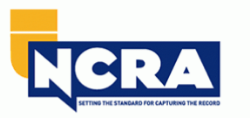Captivate the Jury: Necessary Components of a Powerful Test Discussion
Essential aspects such as understanding the target market, crafting an engaging story, and understanding verbal and non-verbal interaction are important parts of an effective discussion. As these variables intertwine, they create a cohesive technique that not just informs however additionally engages jurors on several degrees.

Comprehending Your Target Market
Recognizing your audience is a critical facet of effective trial discussion. An effective discussion depends upon the capability to comprehend the demographics, values, and proneness of jurors. This understanding educates just how arguments are framed, evidence is presented, and sob stories are crafted, guaranteeing that the message resonates with the jurors on a personal level.
Research study suggests that jurors originated from varied histories and might have differing degrees of recognizing pertaining to lawful proceedings (trial presentation). Thus, it is essential to avoid legal jargon that could alienate or confuse them. Instead, utilizing clear, relatable language promotes interaction and comprehension. Furthermore, comprehending the jurors' prospective predispositions and life experiences enables the trial presenter to prepare for arguments and address problems proactively.
Efficient trial presentation additionally includes observing jurors' reactions throughout the procedures. Being attuned to non-verbal cues can provide insight right into their engagement and receptivity, allowing for real-time adjustments in strategy. Ultimately, an extensive understanding of the target market not only enhances communication but additionally develops rapport, increasing the likelihood of a favorable result. Engaging with jurors as individuals instead of a cumulative unit is vital in cultivating a solid connection in the court room.

Crafting an Engaging Story
Crafting an engaging story is crucial in leading jurors via the complexities of an instance. A well-structured narrative not just simplifies intricate lawful concepts however also involves jurors on an emotional degree, making the information extra relatable and unforgettable.
This message must resonate with the jurors' worths and experiences, fostering a link that transcends plain facts. This chronological technique can help jurors comply with the development of events, highlighting reason and effect.
Including human elements-- such as personal tales or stories-- can further enhance the narrative's effect. These components stimulate empathy, enabling jurors to picture the effects of the case on the real worlds. Furthermore, utilizing a consistent theme throughout the presentation reinforces the primary debate, making it easier for jurors to keep essential factors.
Ultimately, a compelling narrative transforms a trial presentation from a simple address of facts into an influential tale that astounds the jury, encouraging them to mull over with both factor and feeling.
Making Use Of Aesthetic Help
Integrating visual aids right into a test discussion can substantially improve jurors' comprehension and retention of details. Aesthetic materials such as charts, diagrams, pictures, and video clips can transform complex legal concepts and evidence into easily digestible formats. By engaging multiple detects, these help allow jurors to visualize the instance's crucial elements, making it much easier for them to comply with along and understand elaborate details.
In addition, properly designed visual aids can stress crucial points and highlight connections between different pieces of proof. For example, timelines can efficiently show the sequence of events, while annotated images can clarify specific details appropriate to the case. This not just help in understanding yet additionally enhances the story presented by the attorney.
It is vital, nevertheless, to guarantee that visual aids are relevant, clear, and professionally offered. Overly complex or messy visuals may bewilder jurors and interfere with the message. When used sensibly, aesthetic aids offer to complement the oral arguments and enhance the total effect of the trial discussion. Eventually, effective visual interaction can be an effective tool in convincing jurors click here now and assisting them get to educated conclusions.
Grasping Verbal Communication
Efficient verbal communication is important in a trial presentation, as it serves as the key methods via which lawyers communicate their disagreements and link with jurors. Simplicity in language promotes understanding and helps jurors understand complex concerns offered throughout the test.
In addition, tone and pacing considerably effect exactly how messages are gotten. A positive tone communicates authority, while ideal pacing allows jurors to take in info without really feeling bewildered. Lawyers need to additionally differ their vocal inflections to highlight crucial points and keep jurors' rate of interest throughout the presentation.
Additionally, the company of spoken arguments is essential. Structuring the narrative realistically and coherently helps jurors adhere to the lawyer's line of this hyperlink reasoning, making it easier for them to maintain vital information. Utilizing persuasive strategies, such as storytelling, can also boost the emotional vibration of the disagreements presented, therefore producing an extra profound link with jurors.
Eventually, grasping verbal interaction not only strengthens a lawyer's situation but additionally promotes trust and relationship with the jury, significantly boosting the chances of a desirable decision.

Involving With Body Movement
Nonverbal communication plays a vital duty in trial discussions, usually communicating messages that words alone can not share. Body language, encompassing gestures, posture, face expressions, and eye contact, dramatically influences just how jurors view the trustworthiness and sincerity of the presenter. A confident stance, with shoulders back and an open posture, can impart count on, while closed-off body movement might suggest defensiveness or uncertainty.

Faces must reflect the feelings connected with the instance, reinforcing the narrative being provided. For instance, an honest expression during an emotional moment can evoke empathy and reinforce the emotional allure. Inevitably, grasping body language is important for reliable trial presentations, as it boosts verbal interaction and establishes a compelling visibility that reverberates with the jury.
Verdict
In final thought, astounding the jury demands a calculated method that encompasses understanding the target market, crafting a compelling narrative, making use of aesthetic aids, why not find out more grasping spoken communication, and engaging via body language. Each aspect plays a crucial function in developing an effective trial presentation that resonates with jurors on both emotional and intellectual levels (trial presentation). By incorporating these parts properly, legal professionals can substantially boost their ability to persuade and affect court decision-making